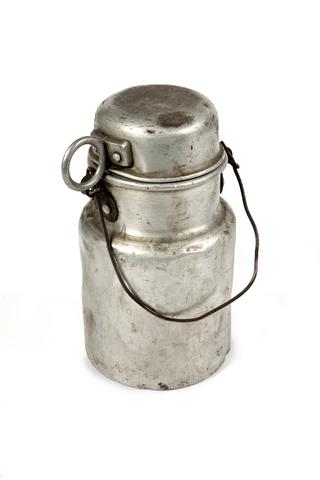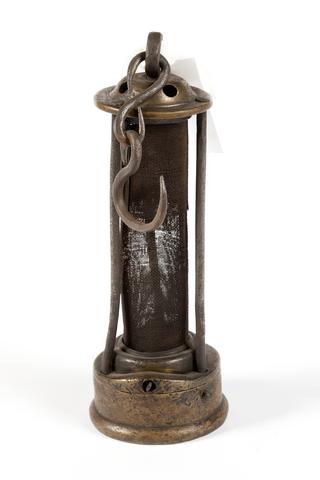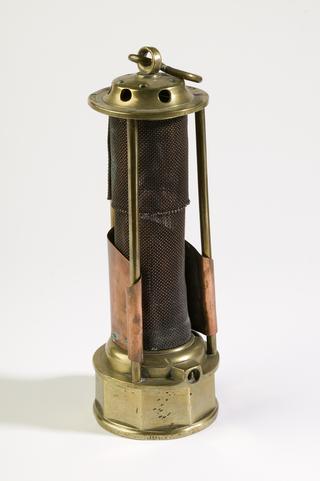
J. Abbot & Co. Ltd Davy lamp




Central part of a 'Tincan Davy' miner's safety lamp. Made by J. Abbot & Co. Ltd, 1880s.
The lock housing on this lamp shows that it was specially made to fit in a protective can. The dimple in the lock housing was to receive the locking screw of the can.
From its invention in late 1815, the Davy lamp was found to cause explosions, often because it was defective or misused. However, as mines went deeper, the ventilation had to be improved and this caused increasingly strong currents of air to impinge on the gauze. This also started causing explosions.
It was only in the 1830s that it was widely recognised that the Davy had to been protected from even gentle air currents. Shields were introduced surrounding two thirds of the flame (see Y2002.19.3.1). However, over time and as ventilation currents increased, the shields became more complete and complicated. By 1850, Jack Davys (see Y2002.19.13.1) were introduced with a glass cylinder around the lower part of the gauze and in 1865 Richard Heckels introduced the Tincan Davy. This was a Davy sitting in a can with a glass window to let the light out. By 1880, these had become very popular as any Davy could be fitted in a can. They remained in use until the First World War.
Details
- Category:
- Coal Mining
- Collection:
- Lancashire Coal Mining Collection
- Object Number:
- Y2002.19.153
- Measurements:
-
211 mm x 72 mm x 68 mm, .6 kg
- type:
- miner's oil safety lamp
- credit:
- Gift of Salford Museum and Art Gallery




